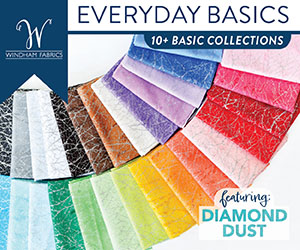
Putting items on sale should be your last resort. Read on to strategize when to discount your inventory.
Incentivize
Make clearing inventory a win-win for you and the customer. When you get to the end of a bolt and have a small piece of fabric leftover, encourage your customers to purchase the remainder of the bolt by offering a 10% discount.
The best part is you can apply this to all of your inventory. For example, you can offer the same discount to a customer who purchases the last two skeins of yarn available.
Once-a-Year Sale
People will come for the sale but likely purchase your full-price inventory at the same time. The best items to put in the sale are items you plan to clear out anyway. Some examples include outdated merchandise or products with limited inventory. Simplify the process by collecting these items throughout the year and storing them in a specific area in your stockroom.
Donate
Some items will be too damaged to sell at a discount, but you can still get a tax write-off. Many volunteer groups don’t mind smudged fabric or sun-exposed yarn. (Think volunteer groups that make blankets for animal shelters.)
All in all, too much in the sale bin indicates you’re buying the wrong inventory. With careful buying and intentional selling, you can get rid of your inventory in a productive way.
Inspiration for this post comes from “Guide to Clearing Out Inventory” by Gwen Bortner published in the February 2023 issue of Creative Retailer.
If you’re looking for more information to guide you in owning a retail business, subscribe to Creative Retailer today. Already a subscriber? No worries—join our Facebook group for insights and dialogue from industry specialists like you. And don’t forget, you can always purchase single issues if you prefer that instead.
If you still can’t get enough, register for the Creative Retailer LIVE Spring 2023 event May 2-4 in Pawhuska, Oklahoma for opportunities to learn from peers and network with industry professionals.














